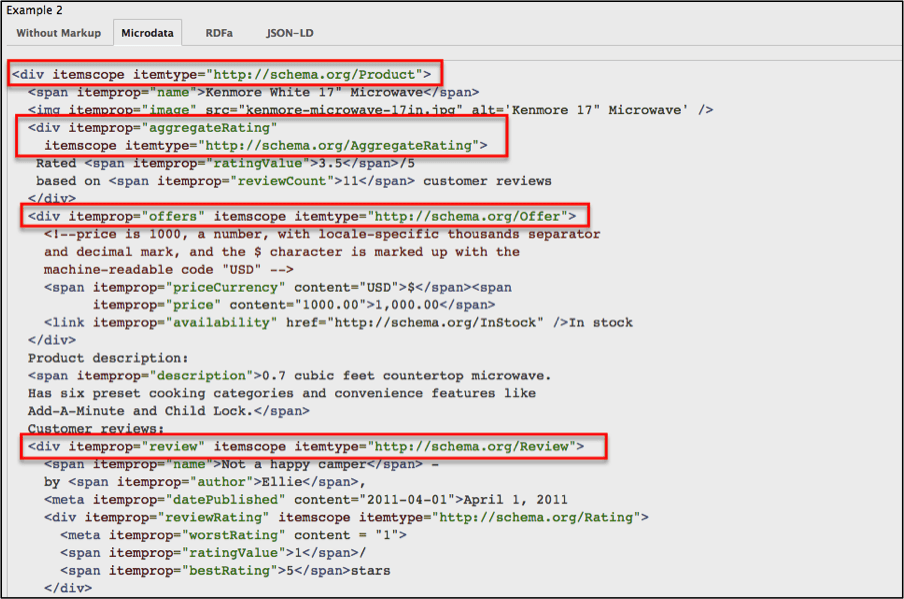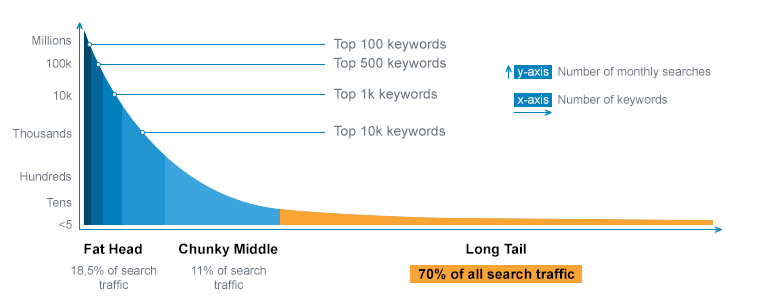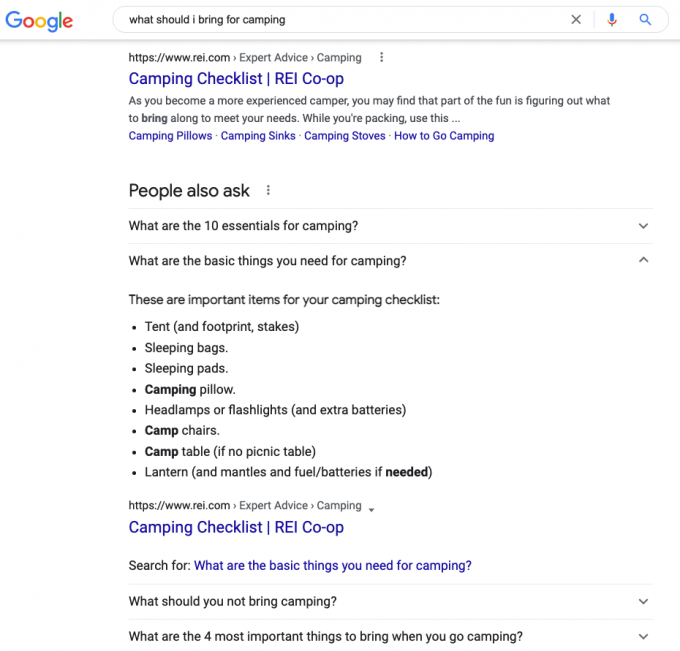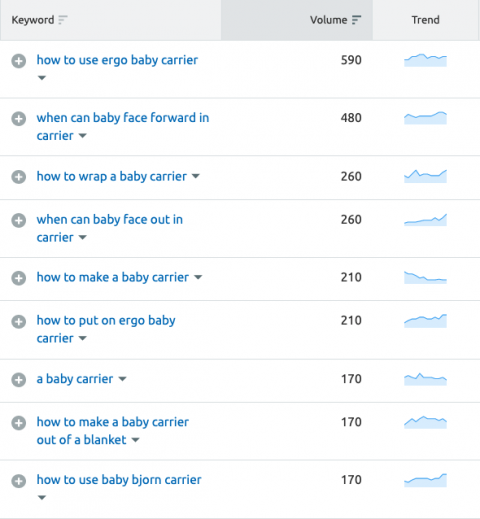Top 10 enterprise SEO trends you need to know in 2021

Enterprise SEO trends can help guide the website and digital marketing improvements that drive traffic, brand recognition, and revenue.
Implementing the proper search engine optimization (SEO) strategies is one of the most effective ways for attracting qualified traffic to your website.
Approximately 68% of online experiences begin with a search engine and only 0.78% of Google searches result in a click on second-page search results.
What does this mean for your organization?
To generate consistent, qualified traffic, you need to rank on the first page of search engine result pages (SERPs). In this article, you’ll explore 10 trends for enterprise organizations and large websites that you can implement for greater success in 2021:
- User Experience.
- Mobile-First Indexing.
- Original Content.
- Voice Search Optimizations.
- Featured Snippets.
- Google’s EAT.
- Rise of Video Content.
- Image Search Optimization.
- Keyword Research.
- High-Quality Backlinks.
1. User Experience
User experience is a critical component of search engine result performance. Sites that offer an easy and intuitive experience lead users to a more pleasurable interaction and tend to keep visitors on your site for a longer period of time.
Positive user experience can also inspire customers to recommend your platform to a friend and encourage them to come back and become a repeat buyer.
There are multiple characteristics that go into user experience. The digital platform user experience can be characterized by its accessibility, clarity, and speed.
Of those three characteristics, site speed has a significant impact on your SEO visibility.
Page Experience
Google is rolling out a new ranking algorithm designed to judge a web page based on the perceived experience a user will have with your webpage. Google measures page experience by a new set of metrics called Core Web Vitals.
These metrics can be used to understand when events complete, what is interactive, and how long it takes for a page to load until a point of stability is reached. As users interact with your page, you will see score values adjust.
This one can be tricky for enterprise organizations to balance and implement quickly as they typically have their development roadmaps built out for a year (or more) at a time
But it is absolutely critical to evaluate and work this into your sprints as quickly as possible.
Site speed can negatively impact your digital marketing efforts with:
- Long load times that lead to high bounce rates and low engagement on your site.
- Slow landing pages that lower Google AdWords Quality Score. This means a higher cost-per-click.
- Slow site speed that hurts your organic rankings across the board.
How Enterprise Organizations Can Improve Site Speed:
Create Realistic Optimization Goals
Home goods retail giant Bed Bath & Beyond recently announced a complete overhaul of its current technology stack. To replace their siloed and unreliable technology, realistically they plan the transformation to take 2-3 years.
Understanding this timeline will help you plan and project growth according to enhancements made in real-time.
Reliable Hosting
Ensure your hosting service has the right infrastructure to support your ecommerce site performance during high-traffic and high-transaction days. In a recent survey, 25% of businesses said that 60 minutes of average server downtime would cost their business $301,000 – $400,000.
Content Delivery Network
A Content Delivery Network is a group of servers spread around the globe. This network distributes the content delivery load, so the server closest to your visitor’s location will respond.
This ensures that the page loads faster and the user has a better experience.
2. Mobile-First Indexing
While this is not new, Google continues to change search results to favor mobile users.
More specifically, mobile users are searching for stores and using the Local Pack in their decision-making process.
Enterprise websites are ranking for large volume search keywords in the Local Pack, so as search adjusts to mobile/local results, your enterprise site needs to consider how this is impacting click and purchase behaviors.
Things to Consider for Mobile-First Indexing
Content
Make sure the mobile site displays valuable content that exists on your desktop site. Double-check that your text, videos, and images are all crawlable and indexable to help search bots better understand your site and offerings.
Structured Data
Include the same structured data markup on your mobile and desktop pages. Avoid any unnecessary structured data if it is not relevant to the page being crawled.
Metadata
Ensure your meta descriptions and title tags are optimized. You may want to consider mobile title optimizations and use titles with fewer characters.
Sitemap
Verify that links to sitemaps are accessible from the mobile version of your website.
3. Original Content
Original content is any kind of material that is uniquely produced for your organization. These materials can be a variety of text, videos, infographics, or images.
Originality is the first step in producing high-quality content that will rank well and be easily identified by search bots.
Why does original content rank well?
This type of information has never been published on the internet prior so it is fresh, relevant, and completely original. Search engines love to reward organizations that are able to create fresh content that provides users with the best experience and the latest information.
While this sounds easy to do in theory, unique ideas may be difficult to come by in competitive markets.
So if you need to reproduce an article, ensure all content is unique and completely your own. Adding additional ideas and content will help your post stand out and could be considered unique content.
Enterprise organizations fall victim to duplicate content when they do not adjust product descriptions given by the distributor.
4. Voice Search Optimizations
Approximately 55% of all households in the US are expected to own a smart speaker in 2022, and nearly 20% of all mobile search queries are currently done using voice search.
There is no doubt that voice search adoption will continue to grow and aid end-users in their search for products and solutions.
How Enterprise Organizations Can Better Optimize for Voice Search
Let’s break it down.
User Intent
Individuals who use voice search are typically specific in what they ask.
For example, what is the address or hours of operation of this business?
How much does this specific product cost?
Does that business offers a specific service?
Understanding the intent of voice searches enables you to structure your website by preemptively answering questions that your users are actively searching for.
It sounds simple, but making sure your important business information is easy to find will help you perform better in voice search. The easier you make it for Google’s bots to crawl your content, the more likely you will perform in search results.
Use Schema Metadata
Schema is a markup language that allows webmasters to provide search engines with additional information about your website, events, and products.
This data makes it easier for search bots to understand your offerings and can boost your visibility.

Target Long-Tail Keywords
When optimizing for voice search, it is important to optimize for long-tail keywords. These are search terms that are longer than your typical search query and are often more specific.
Large organizations often forgo optimization of these types of keywords for shorter keywords with a higher search volume.
So why should you focus on keywords with typically lower search volumes?
Long-tail keywords reflect how many people actually use voice search. These keywords are conversational and more specific. This leads to increased conversion rates with engaged audiences.

5. Featured Snippets
Featured snippets are commonly referred to as “Position Zero.”
These results have been selected by search engines as highly useful in sharing information with the end-user. Google first introduced this feature in 2014, and it has quickly become a prominent feature in search activity.
Featured snippets typically come from pages that already rank in the top 10 for a specific search query, and the vast majority come from pages that rank in the top five results.
That’s why a strong SEO strategy that focuses on ranking high for profitable keywords is critical.
One brand that has focused on ranking high for profitable keywords is REI. As an outdoor supplier, they understand that a lot of research goes into deciding what gear is best to invest in.
This knowledge has encouraged them to create content that aids users in the research stage of the sales funnel.

6. Google’s E-A-T
E-A-T refers to Google’s pneumonic that stands for expertise, authoritativeness, and trust. E-A-T is a part of Google’s Quality Rater Guidelines, which are used by human raters to evaluate the quality of search results.
It is not a ranking factor.
However, the way that human raters use E-A-T to assess content quality gives us insight into what Google is looking for in content, as well.
These qualitis are particularly important for Your Money Your Life (YMYL) websites, where inaccuracies and misinformation have the potential to cause serious harm to users.
See How to Improve Your Website’s EAT to learn more.
7. The Rise of Video Content
Consumers are using video resources more than ever to influence their decision to purchase products and services.
Enterprise organizations must look to build and optimize video content to compete for the short attention span of engaged consumers.
Video content can direct substantial backlinks and social shares when used correctly. Videos have great potential for boosting your SEO campaign success and generating highly qualified traffic.
High-quality videos can generate a large number of backlinks to your website, as well. Videos that generate engagement and views can attract reputable domains to share your content.
These critical shares can have a ripple effect, with hundreds or thousands of people sharing as well.
Sounds easy, right? Think again.
With the large number of videos circling the internet today, organizations need to have high-quality content paired with a video SEO strategy to be effective.
Videos need to generate a reaction out of your audience. Whether that is shock, amazement, or humor, these reactions will spur shares.
One of the best examples of a video that generated large numbers of backlinks is DollarShaveClub’s 2012 video that people still talk about today.
Then a startup, the company turned into an enterprise organization thanks, in large part, to this viral video’s amusing concept and genius PR strategy.
And it only took $4,500 and a single day shooting to produce.
Within hours of the video’s release, major publications including Mashable, Techcrunch, and hundreds of others featured the video in articles.
The chances of your producing a mega-hit like that are slim. Even so, regularly producing thoughtful, quality video that resonates with your audience is a sure way to engage and convert.
8. Image Search Optimization
Think about the last time an image was uploaded to your website. Did you select a product image, click upload and forget about it?
Sounds familiar, right? Without optimization, images uploaded without a second thought can weigh down your website and be difficult for search engines to crawl and rank.
Image Optimization Best Practices
Choose the Proper Format
While there are several different formats you can choose, PNG and JPEG are the most common formats for online websites.
- PNG: High-quality image, but larger file size.
- JPG: Slightly lower image quality, but has more flexibility when it comes to balancing file size and image quality.
WebP has emerged as another alternative. Learn more about image optimization and file formats here.
Compress Images
Web pages can easily be weighed down by large image files. According to HTTP Archive, approximately 21% of a website’s weight comes from images.
Compressing images before you upload them to your website will not only improve your user experience but will help search engines crawl and reward your web pages.
Post Unique Content
Unique images that have been optimized with proper alt text have a greater chance of ranking well in search engine result pages.
Why? Alt text is a simple text description that helps search bots and users with low vision or other impediments to viewing the content understand what the image is displaying.
9. Keyword Research
Keyword research helps in optimizing ads, Google My Business Listings, landing pages, blog content and more. Traffic-generating keywords can help drive sales for your business.

Keyword Research Best Practices
- Utilize keyword research tools to identify long-tail keywords for your business. Your Google Search Console will help you identify unique keywords that drive traffic to your website. This tool will also help you identify keywords you likely were not aware of.
- Perform manual analysis of SERPs to identify user intent for keywords identified for optimization. A manual search will allow you to see what your customers will see when they search for your product. Even low-volume keywords can generate thousands of dollars a month.
10. High-Quality Backlinks
Not all backlinks are created equal, so it is important to build high-quality links that point back to your website.
This is where working with influencers can help. Working alongside influencers, you can generate natural high-quality backlinks and potentially develop a long-term relationship that is mutually beneficial.
Influencers are dialed into what their audience likes and dislikes. So when they work to create content for your brand, they create an image they know their audience will relate to.
The benefit of this brand promotion is unique content that is valuable, carefully curated — and completely link-worthy.
Summary
In 2021, enterprise organizations need to consider these SEO trends.
Improving your website and search experience will help you drive relevant traffic to your website, increase conversions, and meet your organizational goals through this year and beyond.
___
by Greg Shuey
source: SEJ

